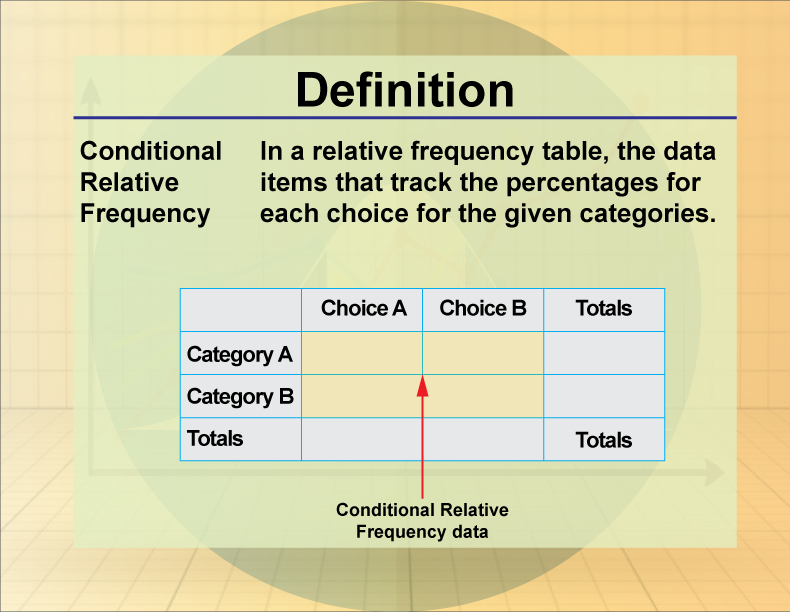
Display Title
Definition--Statistics and Probability Concepts--Conditional Relative Frequency
Display Title
Definition--Statistics and Probability Concepts--Conditional Relative Frequency
Conditional Relative Frequency

Topic
Statistics and Probability
Definition
Conditional relative frequency is the ratio of the frequency of a subset of data to the frequency of a condition.
Description
Conditional relative frequency is crucial in analyzing categorical data, helping to understand the distribution of data under specific conditions.
For example, the frequency of students who pass a test given they have attended all classes is a conditional relative frequency.
Understanding this concept helps students interpret data in surveys and experiments more accurately.

For a complete collection of terms related to Probability and Statistics click on this link: Probability and Statistics Collection.
| Common Core Standards | CCSS.MATH.CONTENT.6.SP.B.4, CCSS.MATH.CONTENT.6.SP.A.2, CCSS.MATH.CONTENT.HSS.ID.A.1, CCSS.MATH.CONTENT.HSS.ID.A.2, CCSS.MATH.CONTENT.HSS.ID.A.3, CCSS.MATH.CONTENT.HSS.ID.A.4 |
|---|---|
| Grade Range | 8 - 12 |
| Curriculum Nodes |
Algebra • Probability and Data Analysis • Data Analysis |
| Copyright Year | 2020 |
| Keywords | statistics, probability, conditional relative frequency |